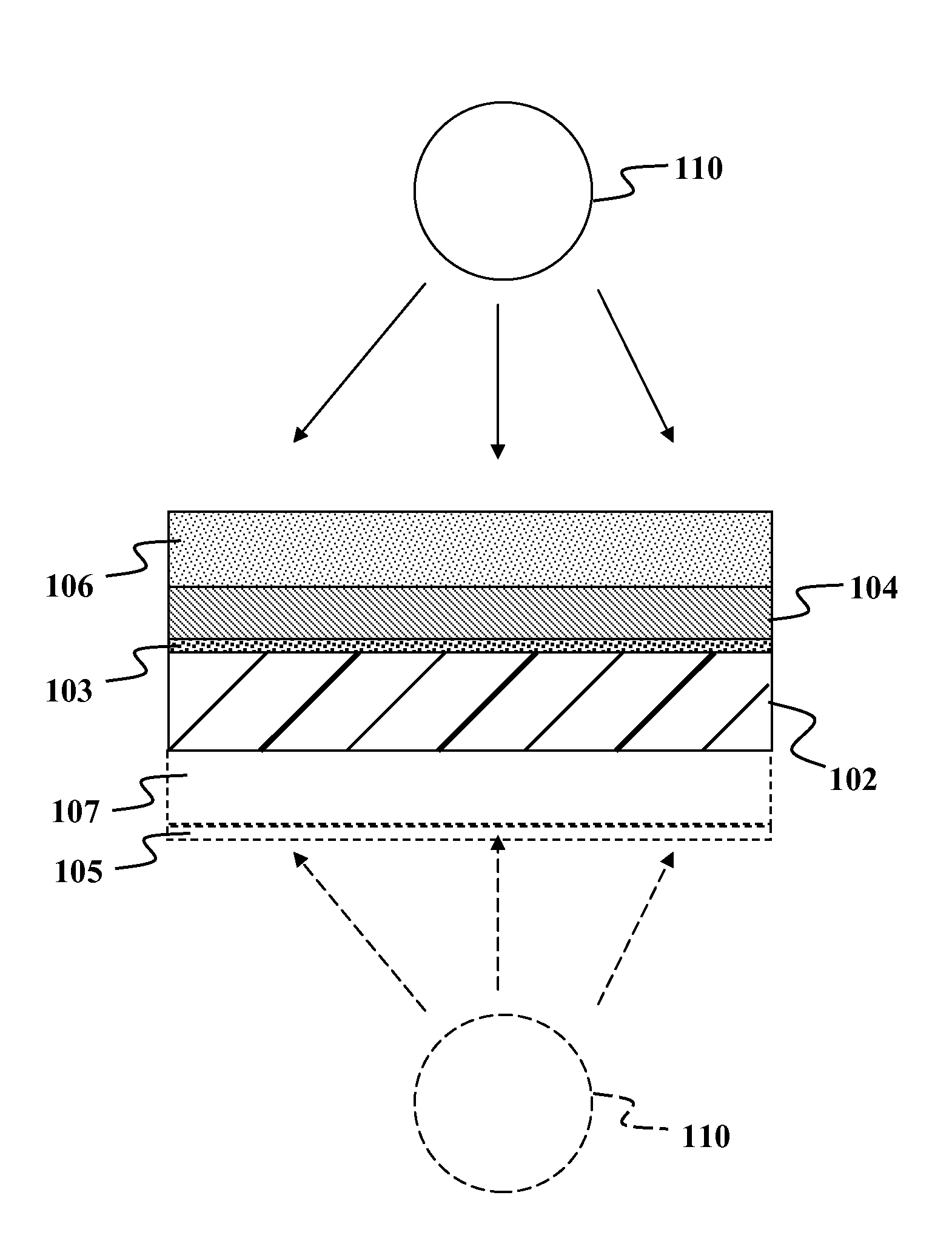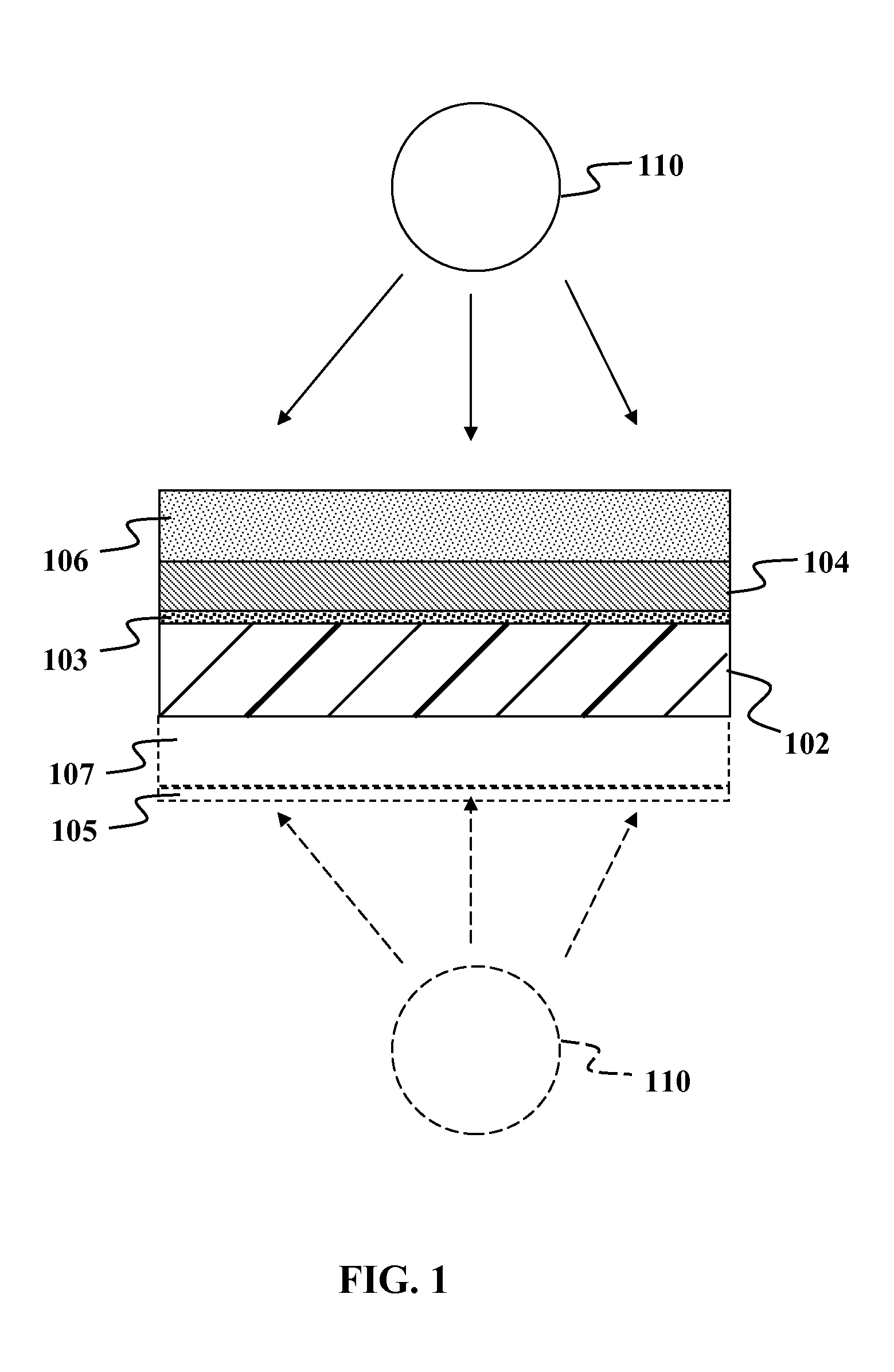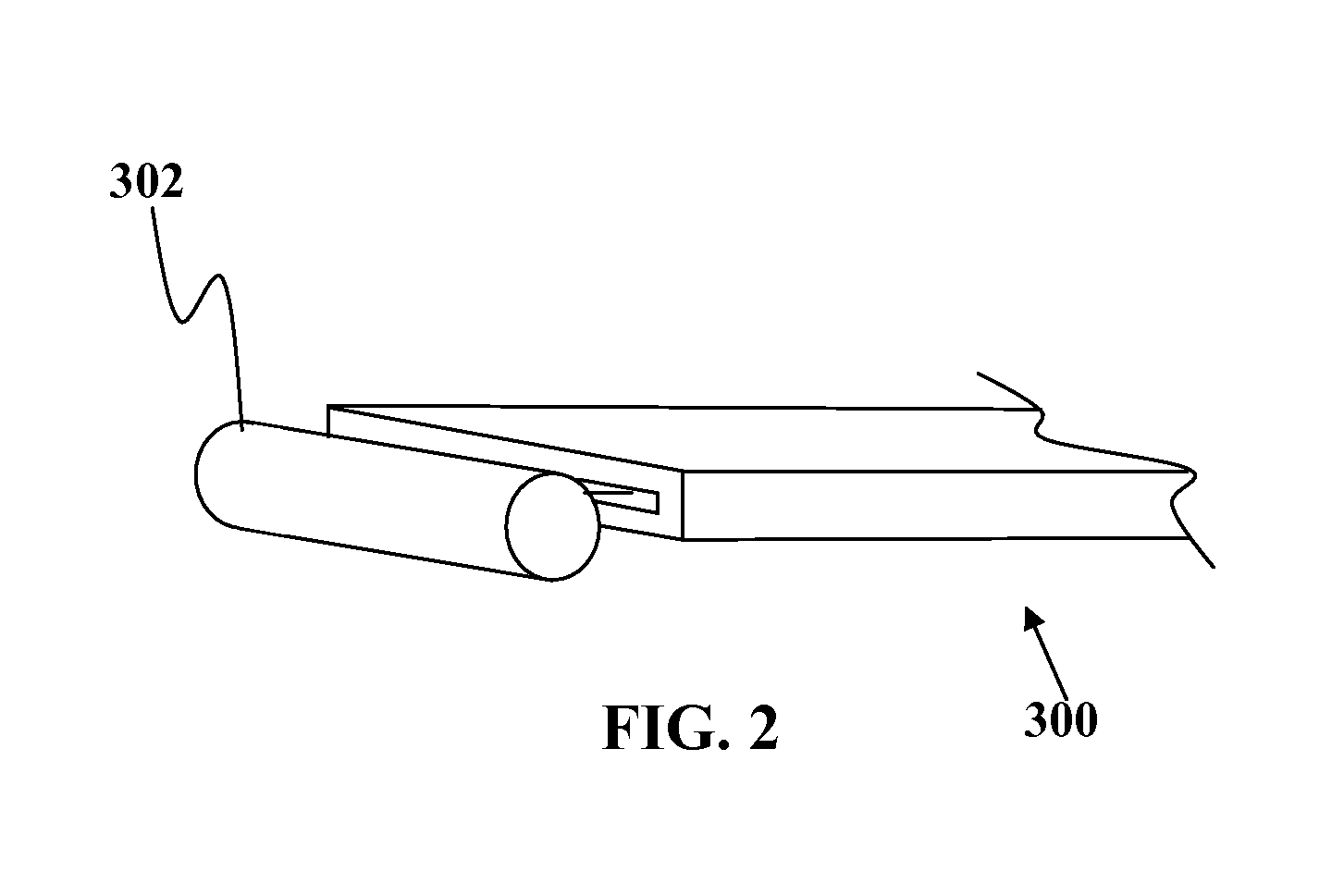Formation of photovoltaic absorber layers on foil substrates
a technology of absorber layer and foil, which is applied in the direction of vacuum evaporation coating, semiconductor devices, coatings, etc., can solve the problems of damage to the substrate upon which deposition occurs, damage to the substrate, and damage to the substra
- Summary
- Abstract
- Description
- Claims
- Application Information
AI Technical Summary
Benefits of technology
Problems solved by technology
Method used
Image
Examples
Embodiment Construction
[0013]Although the following detailed description contains many specific details for the purposes of illustration, anyone of ordinary skill in the art will appreciate that many variations and alterations to the following details are within the scope of the invention. Accordingly, the exemplary embodiments of the invention described below are set forth without any loss of generality to, and without imposing limitations upon, the claimed invention.
[0014]Embodiments of the present invention allow fabrication of CIGS absorber layers on aluminum foil substrates. The invention lends itself to several variants (which remain, however, optional) used as alternatives or in combination. According to embodiments of the present invention, a nascent absorber layer containing elements of group IB and IIIA formed on an aluminum substrate by solution deposition may be annealed by rapid heating from an ambient temperature to a plateau temperature range of between about 200° C. and about 600° C. The t...
PUM
| Property | Measurement | Unit |
|---|---|---|
| Temperature | aaaaa | aaaaa |
| Temperature | aaaaa | aaaaa |
| Pressure | aaaaa | aaaaa |
Abstract
Description
Claims
Application Information
 Login to View More
Login to View More - R&D
- Intellectual Property
- Life Sciences
- Materials
- Tech Scout
- Unparalleled Data Quality
- Higher Quality Content
- 60% Fewer Hallucinations
Browse by: Latest US Patents, China's latest patents, Technical Efficacy Thesaurus, Application Domain, Technology Topic, Popular Technical Reports.
© 2025 PatSnap. All rights reserved.Legal|Privacy policy|Modern Slavery Act Transparency Statement|Sitemap|About US| Contact US: help@patsnap.com



